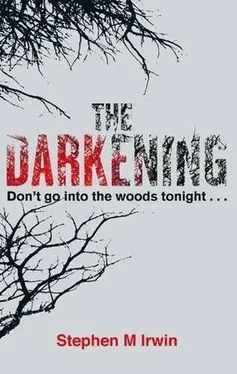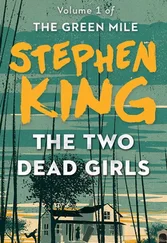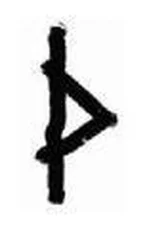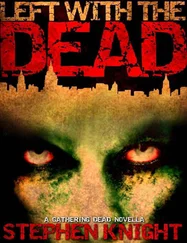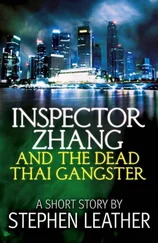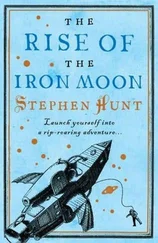Stephen Irwin - The Dead Path
Здесь есть возможность читать онлайн «Stephen Irwin - The Dead Path» весь текст электронной книги совершенно бесплатно (целиком полную версию без сокращений). В некоторых случаях можно слушать аудио, скачать через торрент в формате fb2 и присутствует краткое содержание. Жанр: Триллер, на английском языке. Описание произведения, (предисловие) а так же отзывы посетителей доступны на портале библиотеки ЛибКат.
- Название:The Dead Path
- Автор:
- Жанр:
- Год:неизвестен
- ISBN:нет данных
- Рейтинг книги:5 / 5. Голосов: 1
-
Избранное:Добавить в избранное
- Отзывы:
-
Ваша оценка:
- 100
- 1
- 2
- 3
- 4
- 5
The Dead Path: краткое содержание, описание и аннотация
Предлагаем к чтению аннотацию, описание, краткое содержание или предисловие (зависит от того, что написал сам автор книги «The Dead Path»). Если вы не нашли необходимую информацию о книге — напишите в комментариях, мы постараемся отыскать её.
The Dead Path — читать онлайн бесплатно полную книгу (весь текст) целиком
Ниже представлен текст книги, разбитый по страницам. Система сохранения места последней прочитанной страницы, позволяет с удобством читать онлайн бесплатно книгу «The Dead Path», без необходимости каждый раз заново искать на чём Вы остановились. Поставьте закладку, и сможете в любой момент перейти на страницу, на которой закончили чтение.
Интервал:
Закладка:
The old woman doesn’t want your mother. She wants you.
Overhead, in the winter sky, the moon was high and small, just a slivered narrow eye in a yawning ebony sky.
Was that the last thing Tris saw? The moon? The old woman? A knife? Eight unblinking eyes?
Nicholas felt his eyes drawn to the end of Bymar Street, where it intersected with Carmichael Road. He could feel the wall of dark trees there, as solid and hostile as an army camped outside a city under siege.
He was about to let the greasy curtain fall when something closer to his flat caught his eye.
Across the road, under a moth-flickering cone of light cast by a streetlamp, a small white terrier sat on the footpath. As soon as Nicholas’s eyes fell on the creature, its tail wagged slowly. It was looking directly at his window. It was watching him.
Now that Nicholas had recognized it, Garnock lazily got to its haunches and trotted down Bymar Street in the direction of Carmichael Road.
Nicholas watched it go. He couldn’t stop shaking.
Chapter 13
H e sat shivering on wide, cement steps. Behind him rose the blocky sides of the State Library, wide slabs of raw concrete and dark glass, looking for all the world like a colossal stack of unwanted telephone directories. Across the wide, cold river, the glass spires of Brisbane’s skyscrapers winked in the morning light. The sun itself seemed a tiny, fustian token in cloudless brittle blue. Nicholas was curled tight around himself in the cool shadows-the sun’s rays were still creeping down the monolithic sides of the library building, their small warmth teasingly close yet out of reach. Around him waited other library patrons: bearded men in anoraks, precise women with tight hair and string bags, university students with deadline faces, old men straight as their canes. Nicholas reluctantly pulled his hand from a warm pocket and checked his watch.
It was nearly nine. The drive in had been slow and dejecting. Caught in peak-hour traffic, he had been forced to crawl past a man lying at the side of the road. The man’s lips had been white, his eyes wide with confused terror, chest caved in and ribs protruding, head held off the ground by invisible hands. It took minutes for him to expire, and appear again a split second later, falling from a car that had crashed weeks, months, years ago. Why are you still here? Nicholas had wanted to ask. Why can’t you move on? You weren’t evil, were you? The Thomas boy wasn’t evil. Cate wasn’t evil. Why are you doomed to this horrible, endless rerun? As if hearing Nicholas’s thoughts, the dead man rolled his eyes toward him as his crushed body jerked. Fear and confusion. That was all Nicholas ever saw in their eyes. Terror, bafflement, a glum desire to be done with. Never enlightenment. Never hope. Never portents of heaven or signs of the divine. And they were everywhere. There was no escape, no refuge, no place without ghosts.
He needed answers.
There was a twitter of excitement among the people waiting outside the library. They all started moving, like cows at milking time, as the tall glass doors opened. From their hurried rush, they might have been racing to read the last books on a doomed earth. Nicholas rose wearily. I fit in here, he thought. An unkempt man with strange fires burning behind his eyes. He shuffled into the library.
He watched the last of the small crowd of patrons disperse like swallows to nests: some scurried to the information desk, some to the reference books, some to the microfiche catalogues, most to carrels where they proprietarily placed bags beside the LCD terminals. Nicholas wandered to a far stall and staked his own claim with a pencil, notepad, and a bottle of water. He furtively checked that no one was watching, then reached into his satchel and produced a spray can of insecticide that he sat close by his chair. Then he settled to work.
Half an hour later, he’d mastered the online photograph library. On the screen was a box labeled “Search terms.” Into it he typed “Carmichael Road.” An icon bar gradually filled as the computer searched.
“Search results: 15 hits.”
The first photographs were of different Carmichael Roads in other towns and many suburbs. Then he found Carmichael Road, Tallong. He clicked the link. The black-and-white photograph was from 1925; the caption read “R. Mullins’s delivery truck.” Behind the fragile-looking old vehicle was a nondescript house, naked without connected power lines or a crowning television aerial. He clicked another link. This revealed a posed photographic portrait of “Clement Burkin, meteorologist.” Another link: “C. Burkin’s home, Carmichael Road.” Yet another: a plan of the suburb of Tallong, Parish of Todd, 1891. The fold lines of the old document were as dark as the faded streets with their handwritten names: Madeglass Street, Ithaca Lane, Myrtle Street. The thirty-two lot house blocks hung like ribs from the spines of roads. To the east of them sat a large rhomboid flanked by Carmichael Road on one side and cradled by a loop of river: “Arnold Estate.”
It took only a glance to recognize what the proposed Arnold Estate was. The woods. He leaned closer to the screen.
Dotted lines ran through the rhomboid: “Proposed subdivision. Raff amp; Patterson, Surveyors.”
He wrote down the names.
Another link-a flyer for a land auction from twenty years later, in 1901: “Fifty-eight magnificent new sites! High-set views!” Again, the area of the woods was divided into dotted lines of proposed streets; another development that never happened. “?5 deposit. Thorneton amp; Shailer, Auctioneers.”
He wrote down their names, too.
“Flood damage to jetties and boat houses, 1893.” A jetty on leaning piers seemed to slide down into still, sepia waters. Nicholas blinked. Of course, the ’93 flood. The river would have broken its banks in lots of suburbs, including Tallong. He flicked back to the auction flyer, its map showing the loop of river around the woods. The river waters would have torn right through them. A memory rushed back of leaning trees festooned with bent iron, and the heaved, rotting boat, her nom de guerre, Cate’s Surprise, flaking away to show her real name.
He typed “Wynard,” then “Boat.” Search.
“Search results: 1 hit.”
He clicked the link.
There she was. The caption read: “Former ferry boat Wynard docked at private jetty, Sherwood, 1891.” The sepia photograph was of the same boat he’d seen resplendent in fresh paint on a mirage pond, then decrepit and collapsed in a choked gully.
I’m not crazy.
Nicholas sipped his water as his heart thudded. He closed his eyes and concentrated, trying to get all the images he’d seen into some order in his mind.
The woods. Many planned subdivisions. Many scheduled auctions. Yet none had transpired; the woods had remained undeveloped and untouched.
He opened his eyes and flicked back through his notes, then typed a search for “Auctioneer, Thorneton.”
Three thumbnails: that same flyer for the Arnold Estate subdivision; a photo of a rakish, smiling man in a boater hat accompanied by a heavyset woman in a bustle that was an explosion of tulle; an old photo of the stone Anglican church where both Tristram’s and Gavin’s funeral services had been held.
Nicholas felt a flutter of fear. But why should that be surprising? The church had been the center of Tallong for more than a century. He clicked to enlarge the image.
The caption read: “Funeral service for P. Thorneton, Auctioneer. 1901.” The photograph showed undertakers in top hats with black ribbons sitting atop a horse-drawn hearse. Mourners grim as crows were grouped around the dark stone church. Pritam’s and Hird’s Anglican church. The church of the Green Man. The building, only a decade or so old then, already looked centuries old, as grim and severe as something that had forced its way bitterly up through hard earth.
Читать дальшеИнтервал:
Закладка:
Похожие книги на «The Dead Path»
Представляем Вашему вниманию похожие книги на «The Dead Path» списком для выбора. Мы отобрали схожую по названию и смыслу литературу в надежде предоставить читателям больше вариантов отыскать новые, интересные, ещё непрочитанные произведения.
Обсуждение, отзывы о книге «The Dead Path» и просто собственные мнения читателей. Оставьте ваши комментарии, напишите, что Вы думаете о произведении, его смысле или главных героях. Укажите что конкретно понравилось, а что нет, и почему Вы так считаете.
